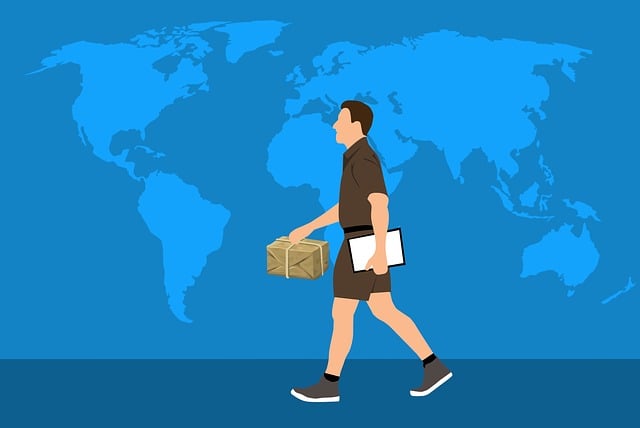The import and export landscape of India keeps evolving and it is an extremely essential part of the nation’s economy. International trade helps boost the foreign reserves of the country and thus adds to the overall economy. To participate in import-export trade, Indian exporters must secure an Importer Exporter Code (IEC), a mandatory requirement imposed by the government of India. Here we will explore the intricacies of this code, including its significance, the application process, and the many ways it benefits Indian exporters.
What is an IEC?
The Importer Exporter Code, widely called IEC, stands as a 10-digit unique identification number issued by the Directorate General of Foreign Trade (DGFT) under the Ministry of Commerce and Industry, Government of India. This code serves as a registration mechanism for businesses or individuals engaged in the import and export of goods and services to and from India.
Why is it important for Indian exporters?
Legal requirement: The Importer Exporter Code is a statutory requirement for Indian businesses or individuals involved in international trade. It serves as a legal document that ensures compliance with the foreign trade policy of India. In conclusion, it safeguards against unauthorized international trade activities.
Global expansion: It empowers Indian exporters to explore and access global markets, thereby expanding their business horizons. It provides a gateway to a diverse range of international customers, opening up a world of opportunities for businesses to grow and flourish.
Smooth customs clearance: Customs authorities demand the IEC as a prerequisite for customs clearance of goods at Indian ports. With this code, exporters would avoid delays, complications, and bottlenecks in the clearance process. Having the code streamlines these procedures, in turn ensuring that goods flow seamlessly across borders.
Availing government benefits: The Indian government actively promotes exports through various schemes, incentives, and subsidies. These government initiatives are often linked to having a valid import-export code. By obtaining the code, Indian exporters can leverage these benefits, which can significantly bolster their competitive edge and support their growth. Whether it’s the Merchandise Exports from India Scheme (MEIS), the Export Promotion Capital Goods (EPCG) Scheme, or any other, having the code is absolutely mandatory.
How to apply for an IEC?
Obtaining an IEC may seem like a complex process, but in reality, it is relatively straightforward. Here’s a step-by-step guide:
Registration on DGFT portal:
Start by visiting the official website of the Directorate General of Foreign Trade (DGFT) and create an account. Registering an account is the initial step in the application process.
After successful registration, complete your profile information and log in.
Filling out the application form:
- Access the ‘IEC‘ section within the portal and select ‘Apply for New IEC.’
- You will be prompted to fill in the ANF-2A application form with precise and accurate details. It is important that the information you provide is accurate, as any discrepancies can lead to delays or complications in the application process.
- Attach the necessary documents, which typically include your PAN card, Aadhar card, bank certificate, and passport-sized photographs.
Fee payment:
The next step involves paying the application fee. You can make this payment online through a secure portal, using your preferred payment method.
Verification and submission:
After successfully filling in the required information, take a moment to review and verify the details you have entered. Ensure that all the information is accurate and matches the supporting documents Once you are satisfied with the details and have attached the necessary documents, submit the application. This will initiate the processing of your IEC application.
Acknowledgment receipt:
After you’ve submitted your IEC application, you’ll get a confirmation receipt from the DGFT. This receipt will have your special IEC number, which is like your official key for international trade. It’s important to know that how long it takes for your application to be processed can be different for everyone. It depends on things like how accurate your information is, how many other applications the DGFT has to handle, and other administrative stuff. But if you fill out your application accurately and respond quickly if the DGFT asks for more information, you can help speed up the process.
Benefits of IEC for Indian Exporters
Facilitates international trade: One of the most significant advantages of obtaining an import-export code is that it enables Indian exporters to engage in international trade seamlessly. With the code in hand, exporters can trade with countries across the globe, expanding their horizons and tapping into new and diverse markets.
Business expansion: Access to international markets opens doors for business growth and diversification. Indian exporters can explore unexplored territories, target a broader customer base, and diversify their product offerings, all of which contribute to business expansion and increased revenue.
Compliance: Compliance is a critical aspect of international trade, and the IEC ensures that Indian exporters adhere to government regulations. By maintaining a transparent record of trade transactions, the code fosters a sense of trust and reliability in the international market.
Government support: The Indian government actively supports the export sector through various incentives, schemes, and benefits. Many of these schemes are contingent upon having a valid import-export code. By securing this code, Indian exporters become eligible to avail themselves of government-sponsored benefits, which can significantly boost their business operations. Some of the key schemes that exporters can take advantage of include the Merchandise Exports from India Scheme (MEIS), the Export Promotion Capital Goods (EPCG) Scheme, and the Export Credit Guarantee Corporation (ECGC) scheme, among others.
Competitive edge: In the fiercely competitive world of international trade, having an IEC is like having a trump card. It helps Indian exporters establish a competitive edge in the global market by allowing them to engage in international trade seamlessly, access government support, and tap into a broader customer base.
A final word
In the interconnected world of global trade, the Importer Exporter Code is not merely a choice but a necessity for Indian exporters. It acts as the key that unlocks a world of opportunities, enabling access to international markets, ensuring compliance with regulations, and providing access to government support. With the IEC in hand, the possibilities for Indian exporters are limitless, and their potential for success in the global marketplace is boundless. There are so many programs launched both by the public sector and by the private sector for supporting Indian exporters. If you are a new exporter trying to make your mark on the globe, you can register for the Amazon Global Selling program by Amazon. This program will give you access to millions of importers worldwide along with proper assistance in the export process. So register now and reap its benefits!
Image by Mohamed Hassan from Pixabay (Free for commercial use)
Image published on September 16, 2018




